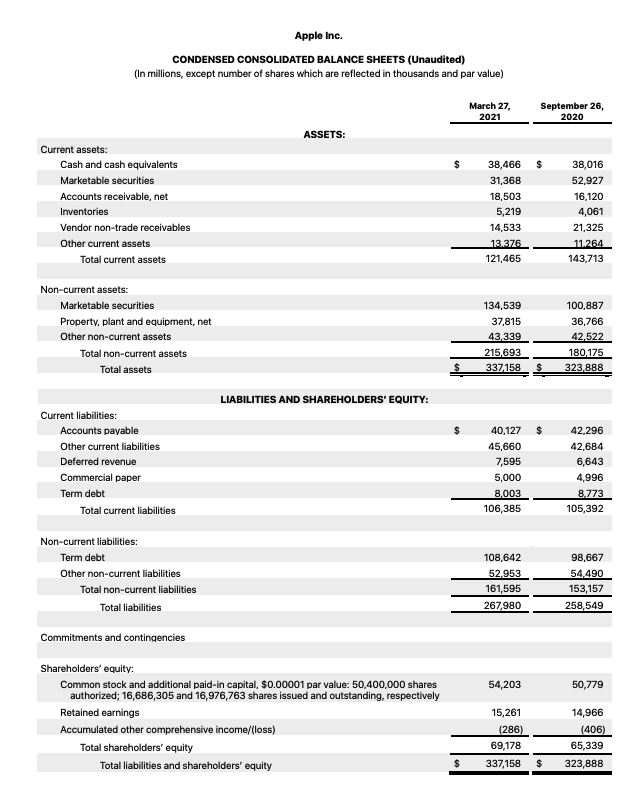Balance Sheet
What is a Balance Sheet?
A balance sheet is a financial statement that is a snapshot of a company's finances at a specific point in time. It is one of the three fundamental financial statements that shows the capital structure of the company: what the company owns, and how it is financed, either via equity or debt.
In order to know of the financial health of a company evolves, it is often interesting to compare balance sheets at different times.

Balance Sheet formula
The balance sheet is divided into two sides :
- On the left side, the company's assets (cash, inventory, ...)
- On the right side, the company's liabilities (rent, taxes, loans, ...) and shareholders' equity
The two sides of the balance sheet must always be equals, giving the following formula:
Assets = Liabilities + Equity
In order to make sure the balance sheet stays balanced, accountants use a double-entry accounting system.
For example, if a company uses cash to pay a $100,000 debt, we will remove $100,000 both on assets to account for the cash used, and $100,000 on liabilities to account for the debt paid.
Assets
Assets are listed on the left side of the balance sheet, generally broken down into two categories: current assets and non-current assets.
Current Assets
Current Assets includes:
- Cash and Cash Equivalents
- Short-term Investments
- Receivables
- Inventory
Non-current Assets
Non-current Assets includes:
- Property, Plant, and Equipment
- Goodwill
- Long-term Investments
Liabilities
Liabilities are represented on the right side of the balance sheet and represent what the company owes. It is generally broken down into current and non-current liabilities.
Current Liabilities
Current Liabilities includes:
- Accounts payable
- Short-term Debt
- Deferred revenue
- Inventory
Non-current Liabilities
Non-current Liabilities includes:
- Property and Equipment
- Goodwill
- Long-term Debt
Equity
Shareholders' equity represents what the company is worth once all liabilities have been paid.
At the beginning of a business, common shares value is equal to the amount invested in the company at its inception. When a company grows its earnings and produces a profit, it can appear in the balance sheet a retained earnings or be paid out to shareholders as a dividend.
- Common Stock and Preferred stock holdings
- Retained earnings
Example: Apple Balance Sheet
For a more concrete example, here's a Balance Sheet from Apple :
